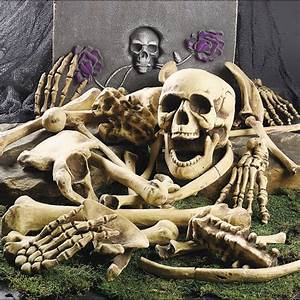Today’s blog comes to you from a chilly fall afternoon in Albuquerque. It is that time when our weather changes dramatically and as I write, I’m chilled to the bone. This indicates that Halloween is right around the corner. I was contemplating what to write about for this week’s blog when I stumbled upon last year’s Halloween blog and decided it has some information about your bones that are worth repeating.
BONE FUNCTION
The following bit of information is a reminder about how important your bones are. Hopkinsmedicine.org tells us that bone is living tissue that makes up the body’s skeleton. Your skeleton provides shape and support for your body as well as protection for your organs. Bones also serve as a storage site for minerals and provides marrow for the development and storage of blood cells.
DID YOU KNOW?
The human skeleton is actually a pretty complex piece of machinery. Here are a few fun facts about the bones of a human body that might be of interest to you.
- The adult body has 206 of them.
- There are 26 bones in the foot.
- The hand including the wrist contains 54 bones.
- The femur, or thighbone, is the longest and strongest bone of the skeleton.
- The stapes, in the middle ear, is the smallest and lightest bone.
- Arms are among the most commonly broken bones accounting for almost half of all adults’ broken bones.
- The collarbone is the most commonly broken bone among children.
- The only bone not connected to another is the hyoid, a V-shaped bone located at the base of the tongue.
- Bones are made up of calcium, phosphorus, sodium, and collagen as well as other minerals.
WHAT IS BONE?
An article in www.bones.nih.gov tells us that bone is living, growing tissue and is made mostly of collagen. Collagen is a protein that provides a soft framework and calcium phosphate is a mineral that adds strength and hardens the framework. This combination makes bone strong and flexible enough to withstand stress.
CAN YOU SEE BONES WITH ULTRASOUND?
The fact is that ultrasound cannot penetrate bone. It can only see the outer surface of bony structures and joints and the soft tissues surrounding them. If you sustain an injury that results in pain or swelling, your healthcare provider might recommend medical imaging such as X-ray. It is useful for looking at bones and dense tissues in your body. Ultrasound can however produce pictures of muscles, tendons ligaments, nerves, and joints through the body.
HDD
If and when you and your healthcare provider determine diagnostic ultrasound is indicated, we will move our bones as fast as possible to get you taken care of in the most expeditious, professional and courteous manner! Call us at 505-350-3397. Have a safe and fun All Hallows Eve!

